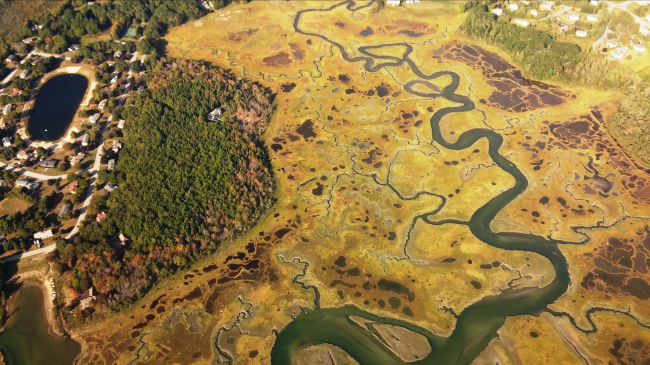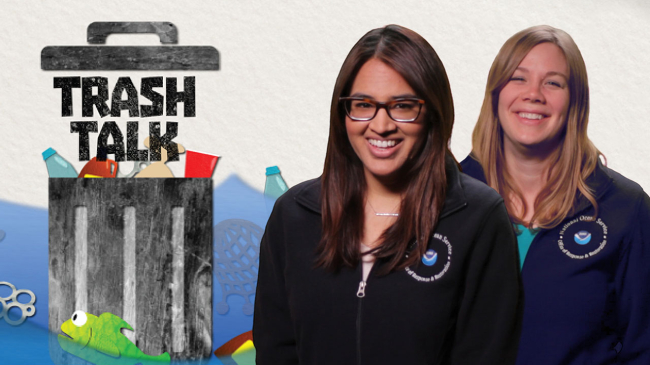Agency invites public comment on proposed new national marine sanctuary
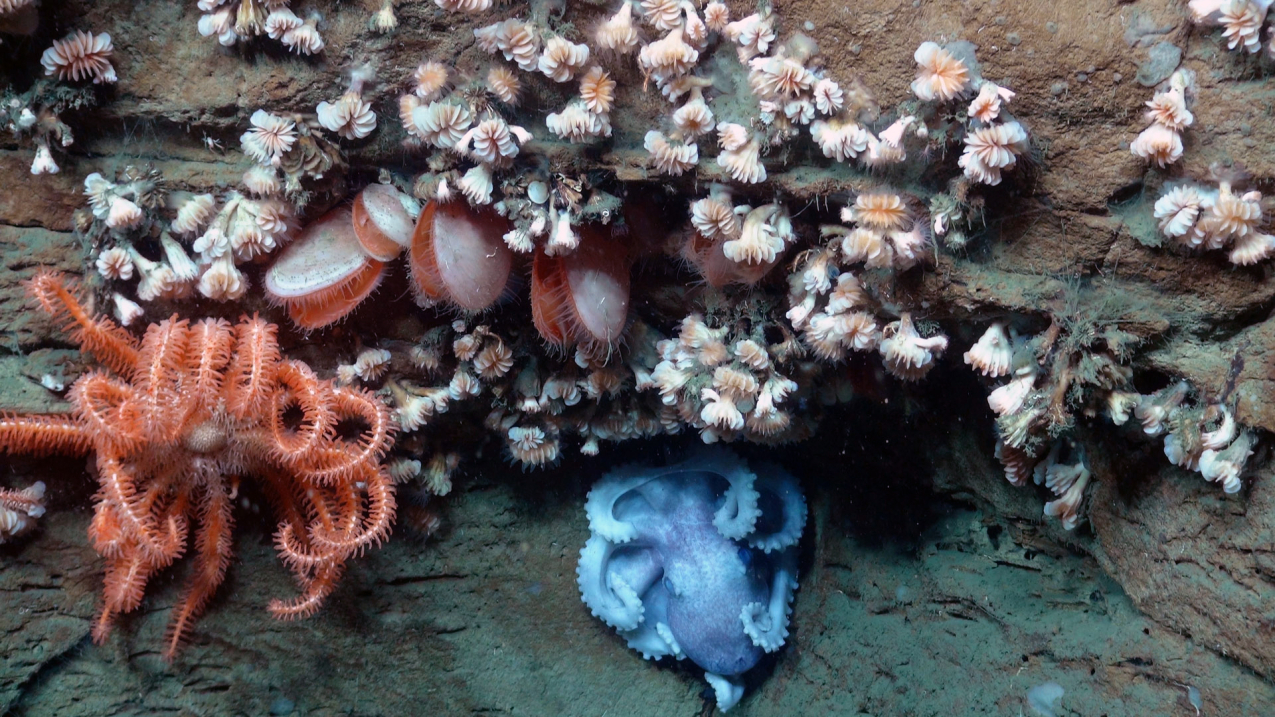
An octopus, sea star, bivalves and dozens of cup coral all share the same overhang in an area adjacent to the Hudson Canyon off the coast of New York and New Jersey. These are very typical of what occurs throughout this area. (Image credit: NOAA/BOEM/USGS)
NOAA is seeking public comment on potentially designating a new national marine sanctuary in Hudson Canyon off the coast of New York and New Jersey. A sanctuary designation would help conserve the area’s rich marine wildlife and habitats, promote sustainable economic activities and create new opportunities for scientific research, ocean education and recreation.
Hudson Canyon is the largest underwater canyon along the U.S. Atlantic Coast, and is about 100 miles off the coast of New York and New Jersey. The canyon — about 2 to 2.5 miles deep and up to 7.5 miles wide — provides habitat for a range of protected and sensitive species, including sperm whales, sea turtles and deep sea corals. The canyon’s rich biodiversity is integral to the region’s economy, underpinning commercial and recreational fisheries, recreational diving, whale-watching and birding.
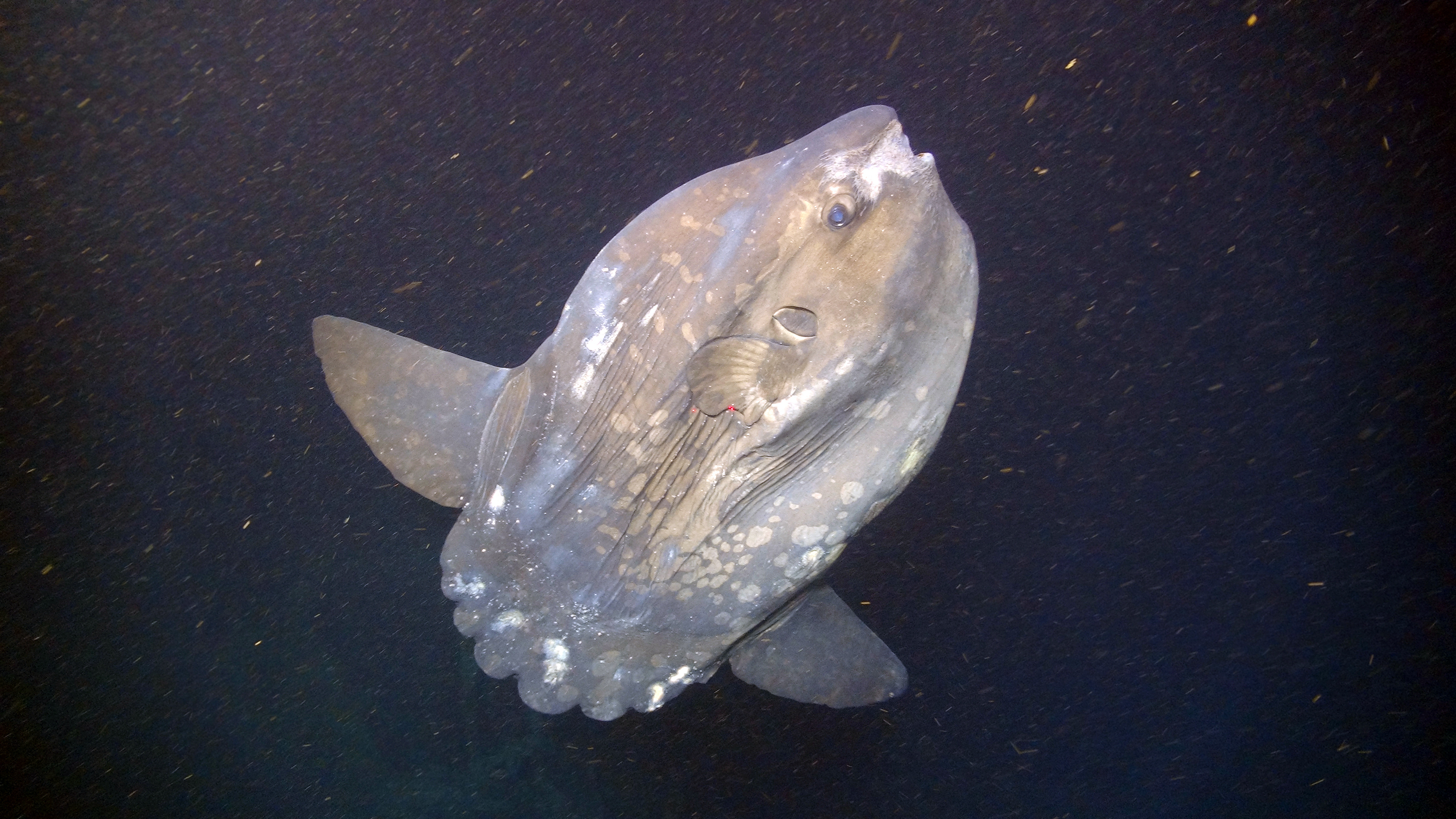
The National Marine Sanctuaries Act allows NOAA to designate and protect areas of the ocean and Great Lakes with special national significance. As directed by President Biden’s Executive Order on Tackling the Climate Crisis at Home and Abroad, NOAA and other federal agencies are pursuing a holistic approach to curbing greenhouse gas emissions and building resilience to climate change and its impacts, including by conserving and restoring ocean and coastal ecosystems. This action is consistent with that approach, including by seeking to expand the National Marine Sanctuary System as one recommendation of the Administration’s America the Beautiful initiative.
“A sanctuary near one of the most densely populated areas of the Northeast U.S. would connect diverse communities across the region to the ocean and the canyon in new and different ways. It would also help advance the Administration’s commitment to conserve and restore special marine places, leaving a lasting legacy for future generations,” said Rick Spinrad, Ph.D., NOAA Administrator. “As someone who grew up in New York City and went on to a career in ocean science, I am excited about how this amazing underwater environment can inspire shared interest in conserving our ocean.”
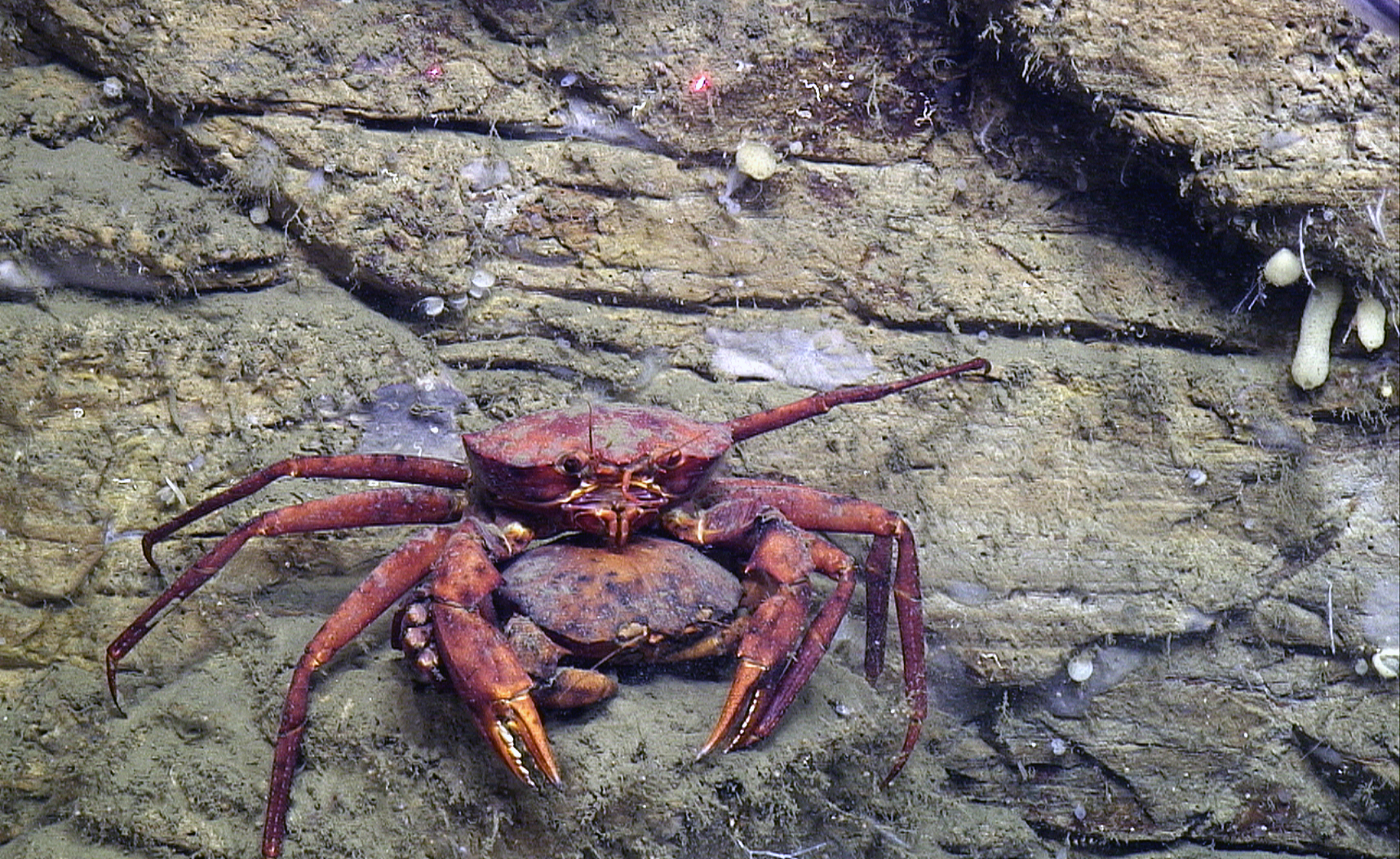
The Wildlife Conservation Society submitted a nomination for a Hudson Canyon National Marine Sanctuary in November 2016, noting that the area provides a wide range of benefits to New York and New Jersey residents such as clean air, fresh water, recreation and food.
Based on that successful nomination, NOAA is considering the potential designation of the Hudson Canyon area as a national marine sanctuary. We are seeking public comments on a range of management considerations, including options for the proposed sanctuary boundary, the potential name, information on the Indigenous and Tribal heritage of the area and other factors.
“The Mid-Atlantic region is already seeing shifts in marine species distributions, including some that are important to humans for food,” said Nicole LeBoeuf, director of NOAA’s National Ocean Service. “Hudson Canyon could serve as a sentinel site for NOAA to monitor the impacts of climate change on submarine canyons and other deep sea benthic habitats, which are vulnerable to the effects of ocean acidification and oxygen depletion.”
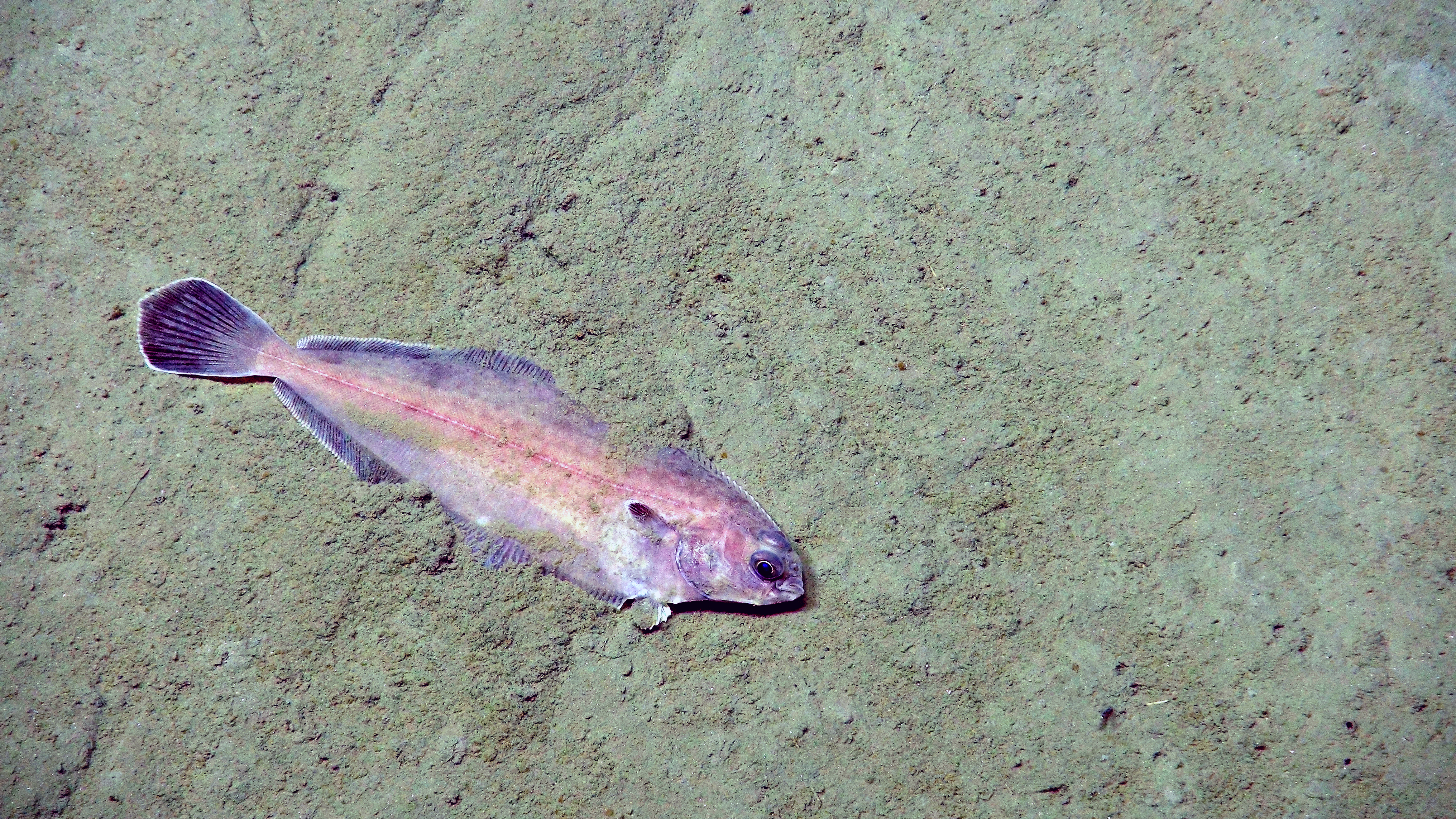
The public can comment on the proposed Hudson Canyon sanctuary designation until August 8, 2022, through the Federal eRulemaking Portal, www.regulations.gov. The docket number is NOAA-NOS-2022-0053. In addition, NOAA will host public meetings during which members of the public can offer oral comments.
A detailed description of the proposed sanctuary, additional information about opportunities to provide comment, and information about the public meetings can be found at https://sanctuaries.noaa.gov/hudson-canyon/.
In addition to initiating the designation process for the proposed Hudson Canyon sanctuary, NOAA has also added Alaĝum Kanuu (Heart of the Ocean) offsite link to its inventory of successful nominations. The Aleut Community of St. Paul Island Tribal Government, a federally recognized tribe in the Pribilof Islands, submitted a nomination for this area in December 2021. Alaĝum Kanuu supports globally significant populations of marine mammals, seabirds and fish, as well as ecological and cultural keystone species such as northern fur seals and Steller sea lions. In addition to being ecologically significant, the biological resources in that nominated area are vital for the subsistence of the Unangan (Aleut) peoples and are integral to their belief systems and identities. NOAA has determined that the nomination meets the national significance criteria and management consideration. Though this is an important step, NOAA has not committed to further action on the nomination at this time.
Learn more about NOAA’s National Marine Sanctuaries.
Media contacts
Alison Gillespie, NOAA, alison.gillespie@noaa.gov, 202-713-6644 (cell)
Vernon Smith, NOAA, vernon.smith@noaa.gov, 240-638-6447 (cell)


